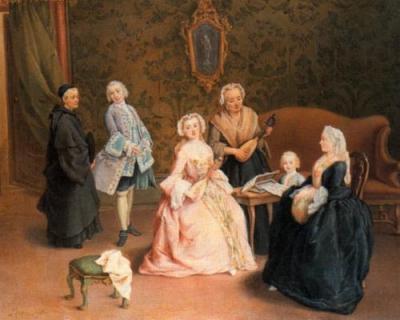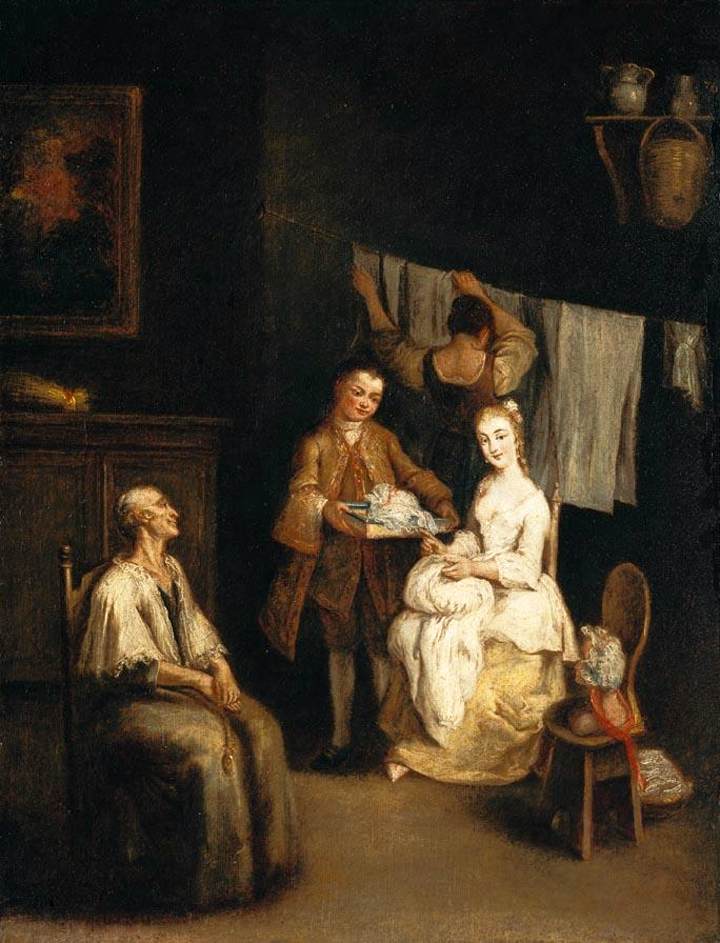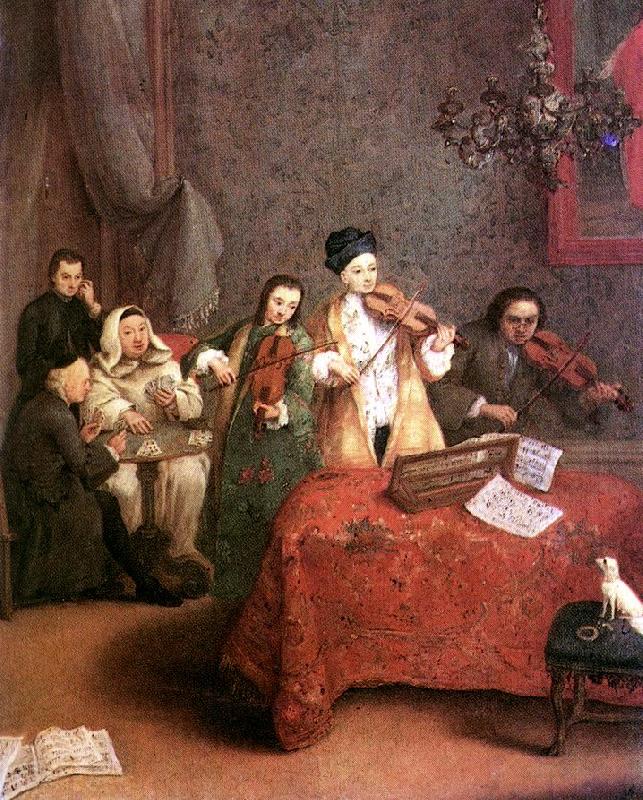2012 (286)
2013 (161)
2019 (2)


Clara (Rhinoceros) by Pietro Longhi
probably 1751
The mysterious masked costumes of Venice's carnival season help make this painting one of the strangest encounters in the collection.
Hidden behind their white masks and tricorne hats, the anonymous spectators in this scene stare upon what would have been a very exotic creature to European eyes. This is one of the few rhinoceroses that would have been seen in Europe since Dürer made his famous woodcut in the 16th century.
The oddness of the juxtaposition of wrinkly rhino and masked observers is heightened by small quizzical details. What is the black oval that covers the face of the lady in blue? Why does the rhino not proudly sport its trademark horn?
(National Gallery of London)
Pietro Longhi的其他作品:
Pietro Longhi (1702 or November 5, 1701– May 8, 1785) was a Venetian painter of contemporary scenes of life.
A paraphrase of Bernard Berenson states that "Longhi painted for the Venetians passionate about painting, their daily lives, in all dailiness, domesticity, and quotidian mundane-ness. In the scenes regarding the hairdo and the apparel of the lady, we find the subject of gossip of the inopportune barber, chattering of the maid; in the school of dance, the amiable sound of violins. It is not tragic... but upholds a deep respect of customs, of great refinement, with an omnipresent good humor distinguishes the paintings of the Longhi from those of Hogarth, at times pitiless and loaded with omens of change".

The Charlatan, 1757.

"Colloquio tra bautte" Painting by Pietro Longhi - Ca'Rezzonico Museum

The woman in the act of unmasking herself can be interpreted in many ways. One way to view this act is to say that the woman’s Moretta mask does not allow the ability to speak because of the lack of an opening for the mouth thus she is unmasking herself in order to speak to the masked man. Another interpretation is to assume the woman is interested enough in the masked man addressing her to remove her mask in order to reveal her true identity to him. Her actions are bringing their encounter into reality and not just in the playful world of masks where one can do whatever he or she desires because no one can recognize them. Removing her mask could allude to removing the illusion of anonymity because the masked man now knows who she is and therefore cannot deny the woman or their meeting’s existence. By removing her mask, the woman removed the illusion of herself that she assumed when wearing a mask and she revealed herself as she is in reality. Parallel to the mask, Venetian society is not what it seems. In this work, Longhi successfully portrays duality in depicting the ordinary occurrence of the procuratore meeting his wife, but he also adds the subtle hints of the masked couples to suggest a more enticing tone and to further portray the troubling aspects of life in eighteenth century Venice.
Painter in his Studio

Concerto familiare

"Il ridotto" Painting By Pietro Longhi Collezione Banco Ambrosiano Veneto

"Il ridotto" Painting By Pietro Longhi Collezione Banco Ambrosiano Veneto

An Interior by PIETRO LONGHI

The confession, Galleria degli Uffizi, Florence

La cioccolata del mattino ( The morning chocolate)

Patrician Family
Longhi made careful preparatory sketches before he painted his genre scenes. Unlike many other painters of the day, he did not have to seek out patrons, but instead he worked steadily for a number of wealthy noble families.

The Tooth Puller拔牙者
(真好玩!)
Pietro Longhi was an 18th century Italian painter. Longhi was the son of portrait painter Alessandro Longhi, but unlike his father, generally painted genre scenes in the Rococo style.

The Ventian Lady's Morning

The Concert
Longhi's paintings of real places and real people doing every day things in the Rococo style brought him great fame during his lifetime. Today he is still revered by art scholars for his unusual themes and innovative ideas for his time.

lute player

Promenade on Horseback
Pictures:http://www.masksofvenice.co.uk/history_of_venetian_masks.htm



